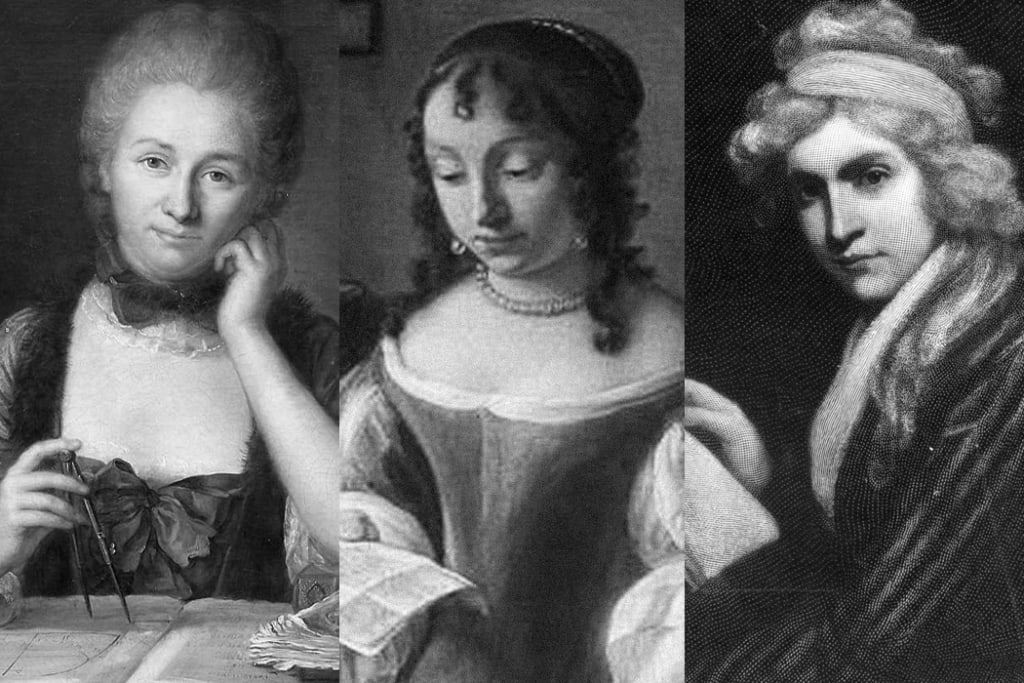Age of Enlightenment in Music
Some influences in the Classical era

The Age of Enlightenment was the period of intellectualism, civil rights, and a tremendously fruitful period of music. This revolutionary age – evolving out of the Baroque period – focused mainly upon civil human rights, reason over faith, and philosophy; such principles were examined in the ancient history of Greeks and Romans, inherently deeming the name “Classical” upon the eighteenth century. These aspects inevitably were assimilated into the various music genres, namely the genre of symphony, and the multi-layered idealisms coincided closely its formal and stylistic characteristics; thus, this genre of Western art ultimately revealed how “enlightened” the fundamental music paradigm came to be.
Generally seen as a rather peaceful period, there existed a considerable amount of war with revolutionary thoughts sitting fresh in the European population from the Baroque period. The fin-de-siècle of the eighteenth century began with the War of the Spanish Succession, and ended with the Reign of Terror in France upon the turn of the nineteenth century. Fascinations with civil liberties began after Mary II and William III of Orange (ruled 1689-1702) revised England as a constitutional monarchy after recognizing parliamentary and people's rights, and many philosophers of the eighteenth century held Britain as the model of constitutional government at the time. Thus, monarchs at the time were influenced by these values; these rulers in Austria, Russia, and Prussia were known as the “enlightened despots,” following Britain's ideals with increased acknowledgement of civil liberties of their people.
A gradual movement from religious to secular thinking – ultimately going hand-in-hand with civil liberties – was the center aspect of the Philosophes, a group of Enlightenment thinkers presiding mainly in France, building upon the discovery of natural science in the seventeenth century. Chief names who saw to this change of thought among the Philosophes included Baron de Montesquieu, Voltaire, and Denis Diderot. Diderot, in his compiled Encyclopédie, criticized divine right and advocated human rights, repetitiously offended the Catholic Church with based on the crux of his argument of reason over faith, and produced a large circulation of his works throughout Europe despite attempts of censorship from various politicians at the time. Voltaire was mainly thought to be an atheist due to his advocation of Church reformation, and his widely known work Candide (1759) imparts how the world is incoherent, utilizes reason over faith with the main character's traits, and emphasizes the folly of mankind with the dark side of fanaticism. Baron de Montesquieu's Persian Letters (1721) beholds a character who recounts a small country in Arabia that ultimately grew into a virtuous society, the latter which was portrayed based off of ideals of ancient Rome and Greece. In his The Spirit of Laws (1748), Montesquieu was extremely critical towards rule of divine right, and called for a balance of governmental power into three sectors of executive, judicial, and legislative, but the majority of power rests within the citizens; this form heavily influenced the Framers of the American constitution when creating the document. Thus, natural law and the secular eventually dominated over the religious, and thinking based on faith naturally deteriorated with the constant emphasis of the empowered individual from various authors.
With the evolution of Enlightenment ideals came the metamorphosis of the symphony. In the early beginnings of the eighteenth century, symphony and overture were titles synonymous with each other, associated specifically with oratorios and opera; however, around the 1720s, symphonies were beginning to be written outside of the opera house. The classic characteristics of a symphony at first coincided with instruments the composer called for – such as Haydn's early symphonies – namely the stringed instruments of violin, viola, violoncello, and double bass, and mainly oboes with sometimes a flute or a bassoon. However, throughout the eighteenth century the symphony was instrumentally amended and increased, with horns, trumpets, timpani, and clarinets included by the end of the eighteenth century with Mozart's late-1780s symphonies for increased dramatic effect and emotion. Even before Mozart a few symphonies were written with special instruments for a specific theme written by the composer. In Haydn's Symphony no. 100 in G Major (1794; “Military), the use of alla turka style called for instruments that were deemed Turkish at the time, including cymbal, tambourine, triangle, and bass drum.
Symphonies were composed with varied taste and structure in the first half of the eighteenth century, beginning with early three-movement ones with the Italian overture pattern of fast-slow-fast. A few finales, although generally composed at a fast tempo, were substituted for minuet-style, which in fact caused symphony to be indistinguishable as a musical genre. However, around 1768 the symphony was finally resolved into a standard structure – and recognized as its own music genre for the most part later in the early 1770s – with a four-movement standard consisting of a weighty first movement, a slow second movement, a dance-like minuet third movement, and a finale fourth movement usually in seen in sonata-rondo form. One of the first definitive styles of the symphony was described with its lofty tone and the number of required performers on various instruments; Johann Abraham Peter Schulz (1747-1800) realized the symphony and said how it “is especially suited to the expression of the grand, the solemn, and the sublime” (Bonds, p.328). Sublime in the eighteenth century was viewed as striking, powerful, and also quite startling from time to time. Haydn's Symphony no. 103 in Eb Major (“Drumroll”) exuded the definition of sublimity especially with creating the ombra beginning of the first movement as bizarre and ominous, the latter increased with the sounding of the timpani and the strange G-Ab motive towards its end, as if announcing something.
The ideals of the Age of Enlightenment can be seen as an influence as well as a parallel to the characteristics of the symphony: not only did both gradually changed in view and thinking, but the Enlightenment's philosophy of an individual's power in government and a more secular thinking allowed composers of the time to facilitate symphony's transition to dramatic sublimity. For instance, the first movement of Monn's Symphony in B Major compared to the first movement Mozart's Symphony No. 41 in C Major (“Jupiter”) is drastically different in every aspect: not only is there greater dynamics in Mozart's Jupiter, a truly sublime announcement of a great event seems to be sounded on the first part, and the texture further develops with a fluctuation to the minor as well as the including of wind instrument timbres, while Monn's Symphony for the most part repeats a motive in B Major that is nearly always repeated in the second violins after the first violins, and a basso continuo in the cellos and basses. Also, reflections of dynamics in cultural society are found in symphonies: with revolution and war causing instability in society, Haydn's “Drumroll” Symphony shows an underlying current of fluctuations with the major-minor tonality switching towards the end of his first movement with the ombra motive interrupting a passage in a major key, and then resuming back to major once more to finish the coda. The American Revolution can be considered a parallel to this, with the opposition against the British resulting in the revolution and eventually ending with America's independence, which would be seen as a major-tonality finish to a symphony piece.
In all the ideals from the Age of Enlightenment, its greatest influence came through music, particularly in the genre of symphony. Despite the great reformations of Gluck in the opera genre, the symphony stands as one of the most changed musical genres; from its dependence in opera to a separate genre defined with sublimity, symphony reflects how the Age of Enlightenment changed so drastically in ideals from the Baroque period. Both moved greatly into the secular region – even Mozart's Requiem in D Minor has definitive secular virtuoso qualities, though it is made to be in the sacred genre – and lessened their dependence onto the Church. When society began to unwind into chaos with war and revolution, so, too, did symphony exhibit an underlying quality of disarray with a façade of clarity and evenness emphasized by the Apollonian Order. When secular thinking spread more and more throughout Europe, greater dynamics were added into later symphonies. Basically whatever happened in society occurred in the genre of symphony: the widespread of philosophy, human rights, and reason over faith showed in symphony with greater emotion, dramatics, and ultimately the powerful sublimity that marked the evolving culture of the eighteenth century.
About the Creator
Cameron Smith
Hello! I am a lifelong disciple of music :) I love my cello, history, literature, fantasy, sustainability, finding out how things work...my aim here is to make the classical world much more accessible and understood!
Insta: @itsme_crazycam
Enjoyed the story? Support the Creator.
Subscribe for free to receive all their stories in your feed. You could also pledge your support or give them a one-off tip, letting them know you appreciate their work.






Comments
There are no comments for this story
Be the first to respond and start the conversation.